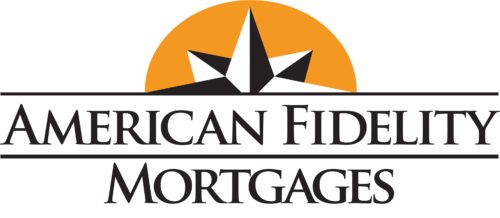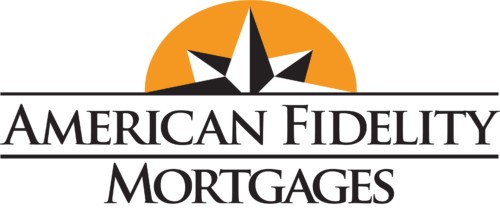Investing in property is one of the most effective ways to build wealth, but financing your investment strategically is just as important as choosing the right property. Property investment loans provide the financial leverage needed to acquire real estate assets, helping investors expand their portfolios and generate long-term profits. Understanding how these loans work, their benefits, and how to choose the right one is crucial for maximizing returns and minimizing risks.
What Is a Property Investment Loan?
A property investment loan is a mortgage specifically designed for purchasing real estate as an investment rather than for personal residence. These loans typically have different requirements, interest rates, and repayment structures compared to owner-occupied home loans. Lenders assess the borrower’s financial standing, rental income potential, and property value before approving such loans.
Types of Property Investment Loans
There are several types of property investment loans, each catering to different investor needs and financial situations. Understanding these options can help you make an informed decision.
1. Fixed-Rate Investment Loan
A fixed-rate loan provides a consistent interest rate for a predetermined period, usually ranging from one to five years. This offers stability in repayments and protects investors from market fluctuations.
2. Variable-Rate Investment Loan
A variable-rate loan has an interest rate that fluctuates with the market. This can result in lower repayments when rates drop but may also lead to higher costs when rates rise. It offers flexibility and potential savings over time.
3. Interest-Only Investment Loan
With an interest-only loan, borrowers only pay the interest for a set period (typically 5–10 years) before transitioning to principal and interest repayments. This helps investors maintain lower monthly costs while maximizing cash flow.
4. Line of Credit Loan
A line of credit loan allows investors to borrow against the equity in an existing property. This is a flexible option for purchasing additional properties or covering renovation costs without taking out a separate loan.
5. Bridging Loan
A bridging loan is a short-term solution for investors purchasing a new property before selling their existing one. This helps cover financing gaps and enables seamless property transactions.
Benefits of Property Investment Loans
Investing in property using a loan provides several advantages that can enhance your wealth-building strategy.
1. Financial Leverage
Property investment loans enable investors to buy real estate with minimal upfront capital, allowing them to leverage borrowed money to maximize their return on investment.
2. Rental Income Generation
With a well-chosen property, investors can generate rental income that covers loan repayments and yields positive cash flow.
3. Capital Appreciation
Over time, property values tend to increase, providing investors with significant capital gains when they decide to sell.
4. Tax Benefits
Property investors can claim tax deductions on interest payments, depreciation, maintenance expenses, and other costs, reducing their overall tax liability.
5. Portfolio Expansion
By leveraging property investment loans, investors can build a diversified real estate portfolio, increasing their potential for long-term wealth accumulation.
How to Qualify for a Property Investment Loan
Lenders assess several factors before approving a property investment loan. To improve your chances of securing financing, consider the following criteria.
1. Good Credit Score
A strong credit history demonstrates financial responsibility and reduces the lender’s risk, improving loan approval odds.
2. Stable Income and Employment
Lenders require proof of stable income to ensure that borrowers can meet repayment obligations.
3. Sufficient Deposit
Most lenders require a deposit of at least 20% of the property’s value, though some options allow for lower down payments with mortgage insurance.
4. Strong Debt-to-Income Ratio
A lower debt-to-income ratio indicates that you have manageable existing debts, making you a more attractive borrower.
5. Positive Rental Yield and Property Potential
Lenders assess the property’s rental income potential to determine its viability as a profitable investment.
How to Choose the Right Property Investment Loan
Selecting the right loan depends on various factors, including financial goals, risk tolerance, and investment strategy. Consider the following when choosing a property investment loan:
1. Compare Interest Rates
Interest rates vary among lenders, so compare fixed, variable, and hybrid options to determine the most cost-effective solution.
2. Assess Loan Features
Look for flexible repayment terms, offset accounts, and redraw facilities that can enhance financial management.
3. Understand Loan Fees
Factor in application fees, ongoing charges, and exit fees to ensure affordability.
4. Consult a Mortgage Broker
A mortgage broker can provide tailored loan recommendations and access to competitive lending options that suit your investment goals.
Risks and Challenges of Property Investment Loans
While property investment loans offer numerous advantages, they also come with potential risks and challenges.
1. Market Fluctuations
Property values and rental demand can fluctuate, impacting potential returns and financial stability.
2. Interest Rate Increases
Variable-rate loans can lead to higher repayments if interest rates rise, affecting cash flow.
3. Vacancy Periods
Unoccupied rental properties result in income loss, making it essential to have financial reserves.
4. Loan Repayment Obligations
Property investment loans require regular repayments, so managing finances and planning for contingencies is crucial.
Tips for Managing Property Investment Loans
To maximize returns and minimize risks, adopt effective loan management strategies.
1. Make Extra Repayments
If possible, pay more than the minimum required to reduce interest costs and shorten the loan term.
2. Use an Offset Account
An offset account links to your loan and reduces interest by offsetting the balance against the loan amount.
3. Regularly Review Loan Terms
Interest rates and loan features change over time, so review your loan periodically to ensure you’re getting the best deal.
4. Diversify Investments
Avoid putting all funds into a single property by diversifying investments across different locations and property types.
5. Have an Exit Strategy
Plan for different scenarios, such as market downturns or financial emergencies, to ensure long-term investment success.
Conclusion
Property investment loans provide a powerful tool for growing wealth through real estate. By understanding loan types, benefits, risks, and management strategies, investors can make informed decisions that align with their financial goals. Whether you’re a first-time investor or an experienced property owner, leveraging the right loan structure can optimize returns and pave the way for long-term success in the real estate market.


